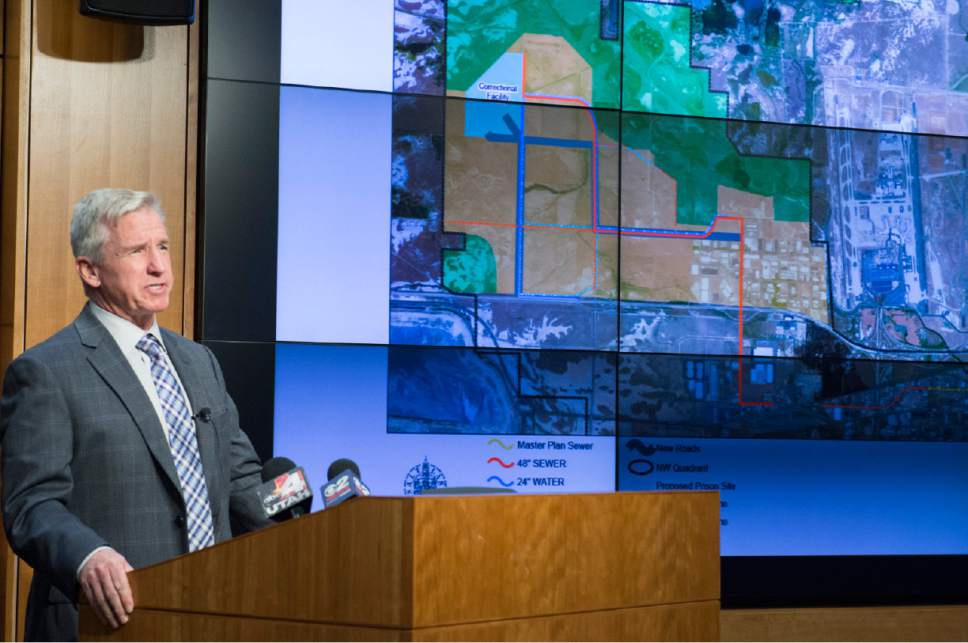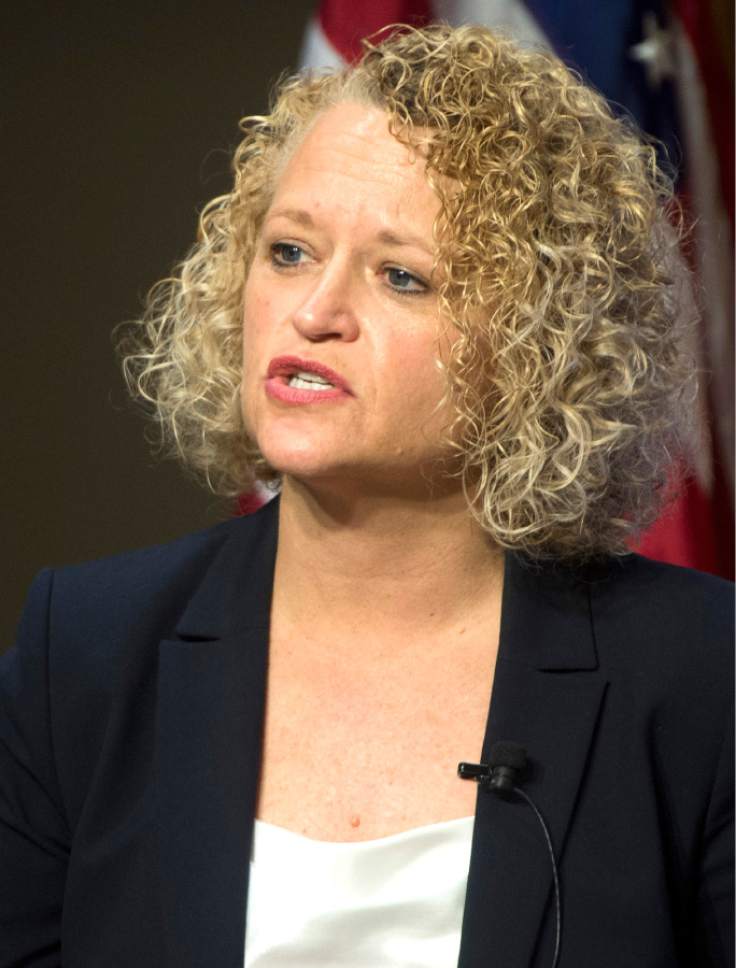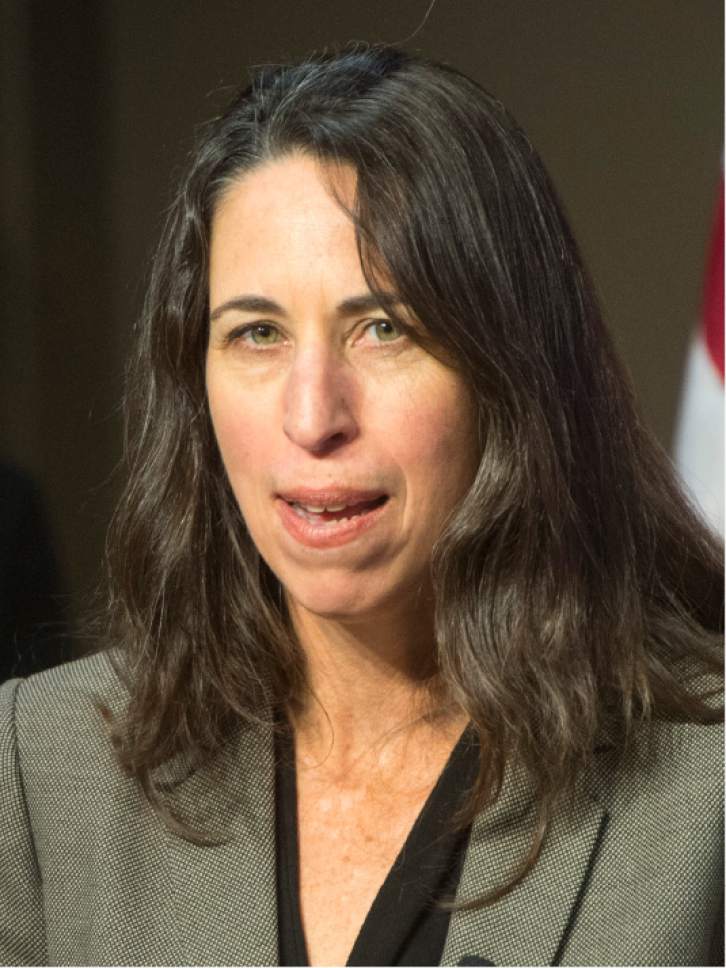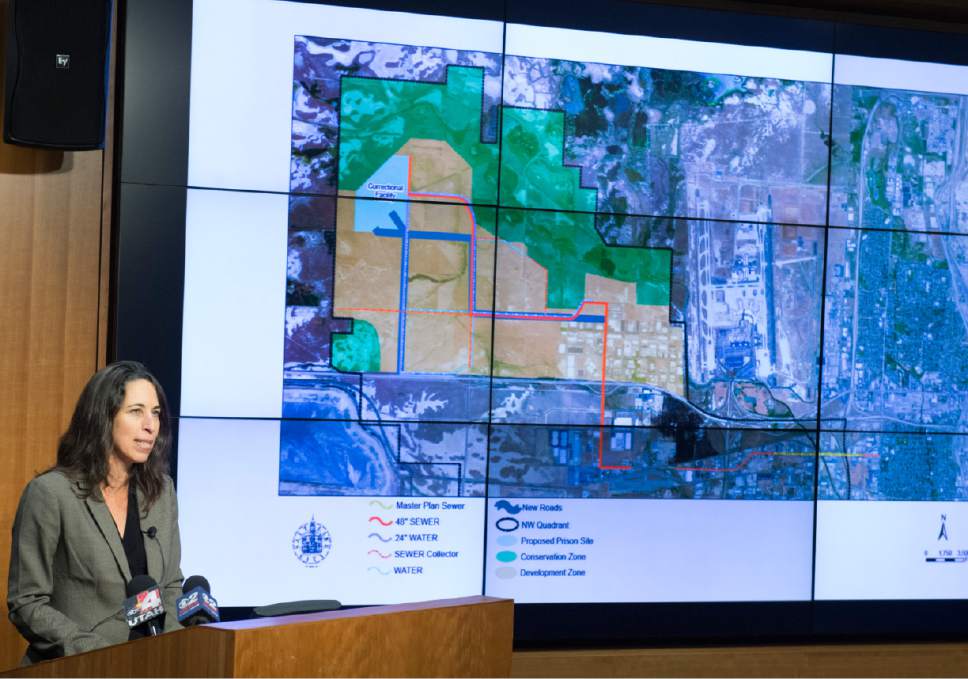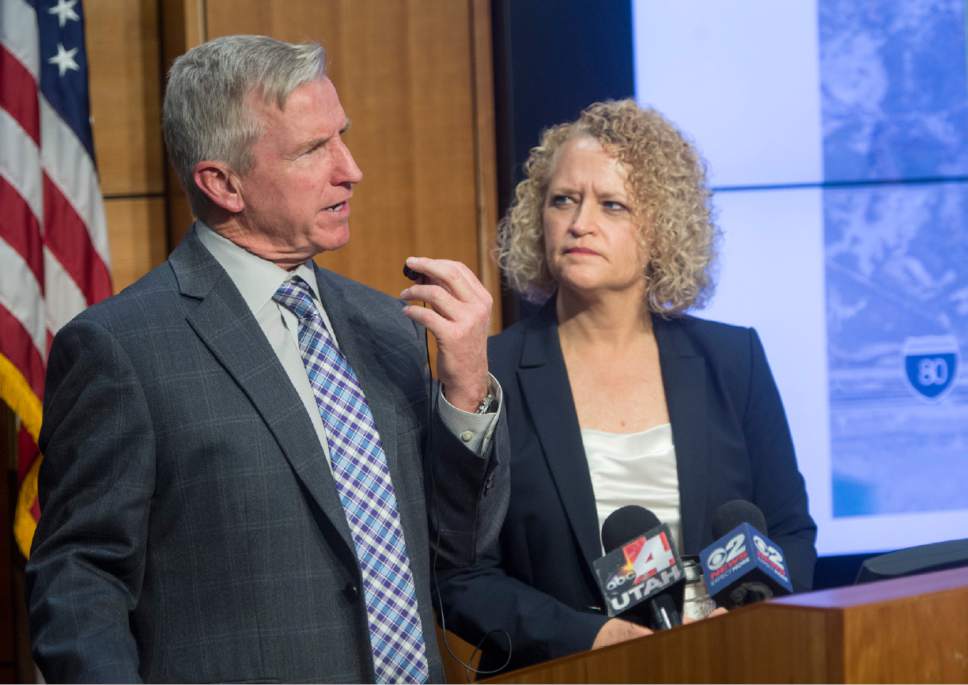This is an archived article that was published on sltrib.com in 2016, and information in the article may be outdated. It is provided only for personal research purposes and may not be reprinted.
With hosting the state prison now a given, Salt Lake City unveiled an aggressive two-year plan Monday to turn its northwest corner near the Great Salt Lake into an economic powerhouse.
Utah's capital has more than 3,500 developable acres north of Interstate 80 and just west of Salt Lake City International Airport, adjoining a 300-plus-acre property the state is preparing for the Utah State Prison when it moves north from Draper
City leaders fought the prison, and Mayor Jackie Biskupski said the siting decision still was "disappointing." But she and others announced a series of plans to take rapid and full economic advantage of state spending on amenities such as roads and utility lines for the facility, all in hopes of spurring wider growth.
In a joint appearance with department heads, Biskupski outlined design and zoning plans for turning the area into a center of light industry, manufacturing and thousands of jobs, calling the Northwest Quadrant project "an incredible economic and job-creation opportunity."
The strategy, the mayor said, "will further secure our reputation as a worldwide business hub."
"No other city in the country," Biskupski said, "has 3,670 acres of developable land within 15 minutes of an international airport, major interstate highway exchanges, railways and a vibrant downtown."
Others called the chance to piggyback on the state's four-year prison construction while developing such a sizable swath of largely vacant turf as "historic," "monumental" and "generational" in scope.
The mayor said using a discretionary sale-tax levy granted by the Utah Legislature to offset prison effects was "not on the table at all."
In addition to economic gains, Biskupski said the city's vision also calls for protection of nearly 4,000 acres of environmentally sensitive open space, wetlands and wildlife habitat near the lake.
Councilman James Rogers, whose District 1 spans the quadrant, welcomed Monday's announcement and said it matched the contours of a Northwest Quadrant master plan adopted by the council in August.
"I'm just grateful that they have picked up the ball," Rogers said, "and are ready to move with it."
But the plan drew concerns from a former Salt Lake City mayor. Rocky Anderson, who during his 2000-2008 tenure urged caution in developing the Northwest Quadrant, said he worried that expanding into that area would increase the city's dependence on commuting.
"We should be building our communities upward," Anderson said, "not sprawling them out."
Biskupski plans to present her full vision and timeline to the City Council on Tuesday, followed by a series of meetings with community stakeholders as key deadlines loom. The city hopes to design and build "an infrastructure backbone" in the Northwest Quadrant by the end of 2018.
"It's time to get to work," said the mayor, who praised state cooperation as it plans the prison.
The state paid $12.4 million in November for the 323-acre prison site, with construction set to be completed and the current penitentiary moved out of Draper by the end of 2020.
State and city officials plan to spend a combined $90 million on roads, utilities and other services in the Northwest Quadrant, with $43 million in state money to serve the new prison location, city Director of Public Utilities Laura Briefer said.
City officials said two new state-funded roads, water lines and a high-capacity sewer conduit are already being extended to the prison property, situated near the quadrant's western-most boundary.
Documents call for the release of initial designs for additional water, sewer, electrical and fiber-optic cable lines as well as a draft environmental-impact report on the quadrant's development for public review by January.
A zoning plan is supposed to be finished by next fall, along with proposals for designating the area a redevelopment project district, paving the way for an array of tax incentives and economic-development tools targeting incoming businesses. The city plans to consult the "brightest minds" to understand the quadrant's full economic potential and how best to market it, said Justin Belliveau, chief administrative officer for the city's Redevelopment Agency. The City Council designated the land for RDA study earlier this year.
Biskupski cited UPS' announcement in September to locate a new regional distribution hub nearby as an encouraging sign of its economic promise. That addition is expected to bring 195 high-paying jobs and more than $200 million in capital investments, state officials have said.
The Northwest Quadrant acres targeted for city development are currently zoned M1, allowing manufacturing while excluding residential land uses. The land is likely to retain that M1 zoning, explained Mike Reberg, who heads the city's Department of Community and Neighborhoods, but with a series of amendments to customize the zone to existing land uses and needs in the quadrant.


